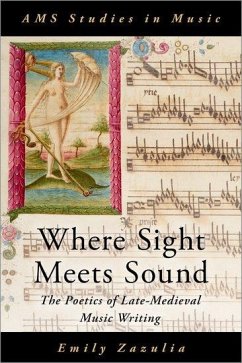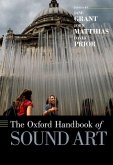Late-medieval composers delighted in complicating the relationship between their music's written and sung forms, often tasking singers with reading their music in unusual ways-from slowing down a melodic line, to turning it backwards or upside down, even omitting certain notes or rests. These manipulations increasingly yielded music that was aurally all but unrecognizable as a derivative of the notated original. This book uses these unorthodox applications of notation to understand how late-medieval composers thought about the tool of musical notation. It argues that these compositions foreground notation in ways that resonate with discourses about media and technology today.
Bitte wählen Sie Ihr Anliegen aus.
Rechnungen
Retourenschein anfordern
Bestellstatus
Storno









